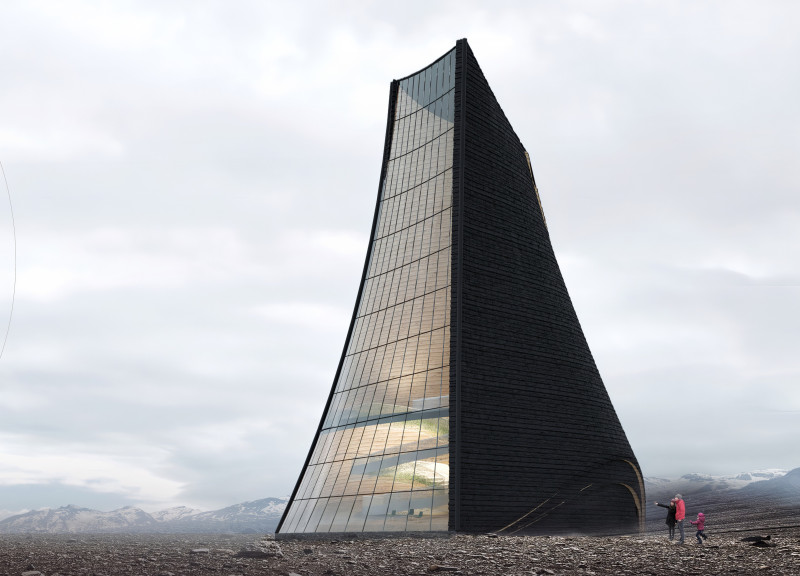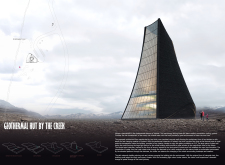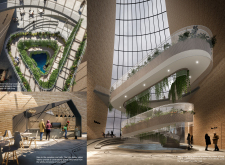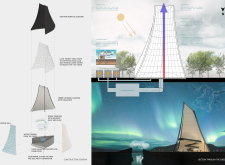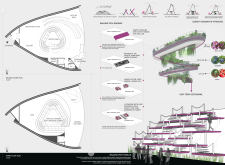5 key facts about this project
The Geothermal Hut by the Creek is located in the unique volcanic landscape of Iceland. It showcases the region's geothermal features while addressing the challenges of local weather and environmental conditions. The design focuses on a tent-like structure that allows the building to blend with the surroundings and adapt to changing climates.
Geometric Form and Spatial Organization
The structure is built with two thick, curved insulated concrete walls. This form provides durability against the island’s harsh weather while also offering thermal mass through the heavy concrete floor. The layout is designed to create a warm and inviting atmosphere suitable for gallery exhibitions. A large glass wall faces the creek, ensuring ample natural light and offering unobstructed views of the picturesque environment outside.
Interior Features and User Engagement
Inside, a central spiral staircase inspired by the aurora captures attention and invites exploration. This design element not only connects different levels of the hut but also brings in elements of nature through local plants and fruits. Water from the creek creates a mist around the staircase, drawing visitors into an experience that merges the interior with the natural world beyond.
Functional Spaces and Sustainability
The design includes several functional areas for various activities. A resting area provides a quiet retreat for visitors, while the reception area features a café that encourages social interaction. The gallery space is specifically made for art exhibitions, promoting a connection between culture and nature. Sustainability is an important focus, as the hut uses geothermal energy for heating and electricity, while an underground tank holds hot water from the creek for practical use.
Pathway and Landscape Integration
A walking path enhances access and enjoyment of the surrounding landscape. It is designed to fit with the natural features of the area, adding playful aspects such as a slide for visitors to engage with the environment. Native plants are incorporated into the landscaping to promote local ecosystems and provide ecological benefits.
The design includes water flowing down the central staircase, creating a connection to the creek. This feature invites visitors to experience the rhythm of nature while indoors, highlighting the relationship between the built space and the elements outside.


